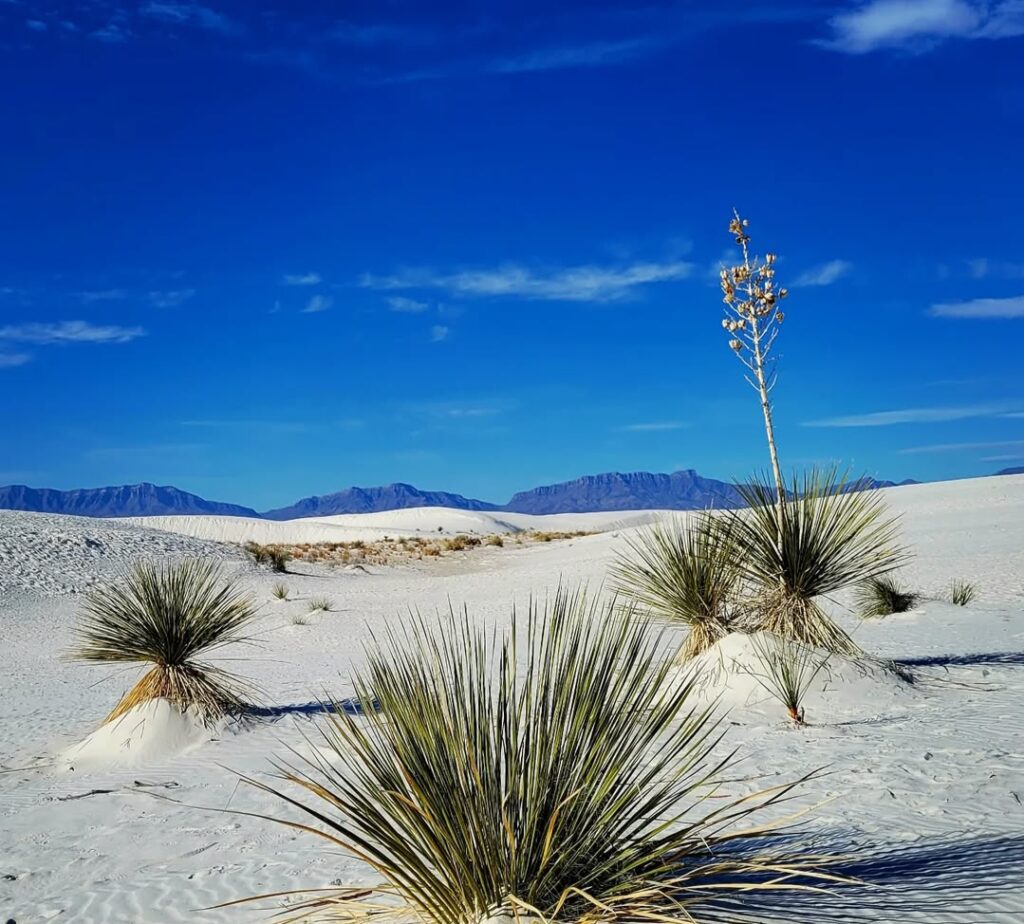Yucca plants are one of the easiest houseplants to grow, thriving both indoors and outdoors with minimal care. These drought-resistant plants are loved for their spiky green foliage, architectural beauty, and adaptability. Whether you’re growing a yucca indoors as a houseplant or outdoors in your garden, understanding their basic needs will ensure they thrive for years. Yuccas require very little maintenance, making them an excellent choice for beginners and busy plant owners alike. In this comprehensive guide, we will go over the best tips for growing a healthy yucca plant, common problems you may encounter, and how to solve them effectively.

- 1 Understanding Yucca Plants
- 2 1. Provide the Right Amount of Light
- 3 2. Watering: Less is More
- 4 3. Use Well-Draining Soil
- 5 4. Potting and Repotting Your Yucca
- 6 5. Fertilizing for Healthy Growth
- 7 6. Temperature and Humidity Preferences
- 8 7. Pruning and Maintenance
- 9 8. Common Yucca Plant Problems and Solutions
- 10 9. Propagating Yucca Plants
- 11 10. Best Companion Plants for Yuccas
- 12 FAQS
Understanding Yucca Plants
Yucca plants belong to the Asparagaceae family and are native to dry, arid regions, where they have adapted to thrive in harsh conditions. With over 40 species, these plants vary in size and shape, but all share one common trait—they are tough and can withstand neglect. Some popular species include Yucca elephantipes (Spineless Yucca), Yucca gloriosa (Spanish Dagger), and Yucca filamentosa (Adam’s Needle). Each type has unique characteristics that make it suitable for different environments. Indoor varieties tend to be more compact and manageable, while outdoor varieties can grow into large, striking landscape plants that enhance any garden.
Tip: Choose the right species for your space. Indoor varieties like Yucca elephantipes are less spiky, making them ideal for homes, while outdoor varieties can grow large and require ample space to thrive.
Yucca Plant Care Time Table
| Care Activity | Frequency |
|---|---|
| Watering | Every 2-3 weeks (indoors), Every 1-2 weeks (outdoors) |
| Fertilizing | Every 6-8 weeks (spring and summer) |
| Repotting | Every 2-3 years |
| Trimming | Dead leaves should be removed as needed. |
| Sunlight Exposure | Daily, at least 4-6 hours of indirect or direct sunlight |
1. Provide the Right Amount of Light
Yucca plants love bright, indirect sunlight but can also tolerate direct sunlight for extended periods. If grown indoors, placing them near a south or west-facing window is ideal. Outdoors, ensure they get at least 4-6 hours of sunlight per day, as inadequate light can lead to leggy growth and weak stems. The plant thrives when exposed to consistent lighting conditions, which helps maintain its vibrant, deep green foliage.
Tip: If your yucca’s leaves are turning yellow, it might be receiving too much direct sunlight. Consider moving it to a slightly shaded location or using sheer curtains to diffuse intense sunlight indoors.
2. Watering: Less is More
Yucca plants are drought-tolerant, meaning they do not need frequent watering. Overwatering is the number one cause of root rot in yuccas. Always allow the soil to dry out between waterings to prevent soggy roots. These plants store moisture in their thick roots and stems, allowing them to survive extended dry spells without any problems.
Tip: Stick your finger into the soil up to 2 inches. It’s time to water if the soil is dry at that depth.Avoid watering if there is still moisture, as this can encourage root rot.
3. Use Well-Draining Soil
Yuccas prefer sandy, well-draining soil that prevents excess moisture retention. A cactus or succulent mix works well because it promotes aeration and allows water to pass through easily. If using regular potting soil, mix in sand or perlite to improve drainage and prevent the roots from sitting in water, which can lead to fungal infections and root decay.
Tip: Avoid heavy clay soils, as they retain moisture and can lead to root rot, a common issue for yucca plants.
4. Potting and Repotting Your Yucca
Yucca plants do not require frequent repotting and prefer slightly root-bound conditions. When you notice roots pushing out of the drainage holes or the plant becoming top-heavy, it’s time to repot. Choose a pot that is only slightly larger than the previous one to avoid excess soil retaining water.
Tip: Always use a pot with drainage holes to prevent water accumulation at the bottom, which can cause root damage over time.
5. Fertilizing for Healthy Growth
Yucca plants do not need much fertilizer, but occasional feeding can promote healthy growth and vibrant foliage.For the spring and summer growing season, use a half-strength diluted solution of a balanced liquid fertiliser. Avoid over-fertilizing, as too much can lead to weak, leggy growth.
Tip: Avoid fertilizing in the winter months when the plant goes dormant, as it won’t absorb nutrients efficiently during this period.
6. Temperature and Humidity Preferences
Yucca plants thrive in warm temperatures between 60-80°F (16-27°C).Although they can withstand lower temperatures, they should be shielded from frost. If growing outdoors in colder climates, bring your potted yucca indoors during the winter months to protect it from freezing temperatures.
Tip: If you live in a colder region, cover your outdoor yucca with burlap during winter to protect it from frost damage and extreme weather conditions.
7. Pruning and Maintenance
Pruning helps maintain the shape and size of the yucca. Remove dead or damaged leaves regularly to encourage healthy new growth. If your yucca becomes too tall, you can cut the top off, and new shoots will grow from the cut area, promoting a fuller appearance.
Tip: Always use sterilized pruning shears to prevent infections and encourage healthy regrowth.
8. Common Yucca Plant Problems and Solutions
Yellow Leaves:Usually, overwatering is the cause. Make sure the soil drains properly and cut back on watering.
Brown Leaf Tips: Low humidity or underwatering can cause leaf tips to dry out. Increase humidity levels and check your watering routine.
Pests (Spider Mites, Mealybugs): Wipe the leaves with a damp cloth or use insecticidal soap to remove infestations.
Soft and Mushy Stems: This indicates root rot due to overwatering. Remove affected parts and allow the soil to dry out before watering again.
Tip: Regularly inspect your yucca for pests and diseases to catch any issues early before they spread.
9. Propagating Yucca Plants
Yucca plants can be propagated through cuttings or by removing and replanting offsets. Cut a healthy stem and let it dry for a day before planting it in well-draining soil. Avoid watering immediately after planting to prevent rot.
Tip: Water sparingly after propagation and place the plant in indirect light until new roots establish.
10. Best Companion Plants for Yuccas
Yucca plants pair well with succulents like agave and aloe vera. They create a stunning desert-like aesthetic when planted together, making them excellent landscape choices.
Tip: Choose plants with similar water and light requirements to simplify care and maintenance.
Growing yucca plants is a rewarding and simple experience, making them an excellent choice for beginners. By providing the right light, soil, and watering schedule, your yucca plant will thrive for years. Always watch out for common issues like overwatering and pests, and take action early to maintain a healthy plant. With these ten essential tips, you’re now equipped to grow a strong and beautiful yucca plant in your home or garden.
FAQS
How much sunlight does a yucca plant need?
Yucca plants thrive in bright, indirect light but can also tolerate full sun. Indoor yuccas should be placed near a sunny window.
Do yucca plants need fertilizer?
Yucca plants require minimal feeding. Use a diluted, balanced liquid fertilizer once a month during the growing season (spring and summer). Avoid fertilizing in winter.
Can I grow a yucca plant indoors?
Yes, yucca plants make great indoor plants. Just ensure they get plenty of bright light and are planted in well-draining soil
How do I prevent my yucca plant from getting leggy?
To keep a yucca plant from getting too tall and leggy, provide enough sunlight and occasionally prune the top to encourage bushier growth
How do I propagate a yucca plant?
Yucca plants can be propagated by cutting offshoots (pups) or by stem cuttings. Let the cuttings dry before planting them in well-draining soil.
Why are my yucca plant’s leaves turning yellow?
Yellow leaves can be caused by overwatering, poor drainage, or low light conditions. Adjust care accordingly.



